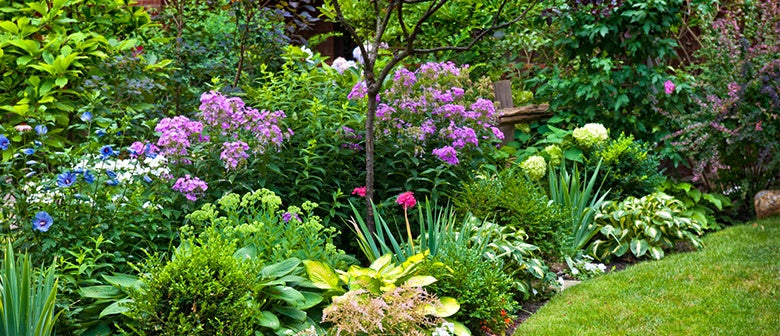The main difference between annual and perennial plants, is how long they last. The word perennial means, “present at all seasons of the year”, existing or continuing in the same way for a long time, or happening again and again. The word annual means living or growing for only one year or season. An annual plant completes its entire life cycle in a single growing season.
Below we break down the differences a bit more.
Perennials
Perennials are plants that survive through the winter and grow back every year in the garden. These are usually further defined as plants that survive more than two years in the garden. Most perennials won’t flower until they are mature or well established, which can take a year or so after they are planted. Plants you buy at the garden centre will usually flower the year they are purchased as the first year or so of growing has been done at the nursery.
Once open, perennial blooms last an average of four to six weeks. Perennials require seasonal care (pruning, fertilising etc.) each season and are not a plant and forget, as you tend to do with annuals.
Though ideally perennials should last for years, not all can survive a freezing winter. Due to hybridising a lot of perennials provide an amazing array of long lasting colour, but as a consequence are often not as hardy as the traditional perennial. There are many common garden plants, like geraniums and begonias, that are often referred to as annuals because they die in winter. These are more accurately called “tender” perennials, whereas the ones that survive the cold are “hardy” perennials. If you live in a place with cold winters, it’s okay to call tender perennials “annuals” because it avoids confusion!
Some people have a hard time remembering the proper term for each type of plant. Perennials don’t have to be planted each year, they’re more permanent, so some people remember ‘perennials’ by remembering that they’re more ‘permanent’!
Images from top left; arctotis, aster, dianthus
Images from bottom left; lavender, cuphea, pelargonium
Annuals
Annuals are plants that you have to replant every year. True annuals are plants that, in one growing season, start from seed or seedling, quickly grow to maturity, bloom continuously, set seed and then die. An easy way to remember this is that it’s something you have to do annually, like your taxes (except WAY more fun!!).
Annuals are commonly used as borders and in containers and flower boxes to brighten up the landscape. Annuals give quick results and create an instant pop of colour in the garden. Often the lifespan of annuals is shorter and they won’t withstand the climate rigours as easily a perennial.
Annuals are typically cheaper than perennial flowers and provide a lush display of colour from late spring when they’re planted through the summer season. Some people have a hard time remembering the proper term for each type of plant. Because annual means “yearly,” some people think annual plants keep coming back each year on their own. Annual plants actually get their name because they only have a one-year (annual) life span.
Images from top left; zinnia, stock, portulaca
Images from bottom left; pansies, lobelia, alyssum













